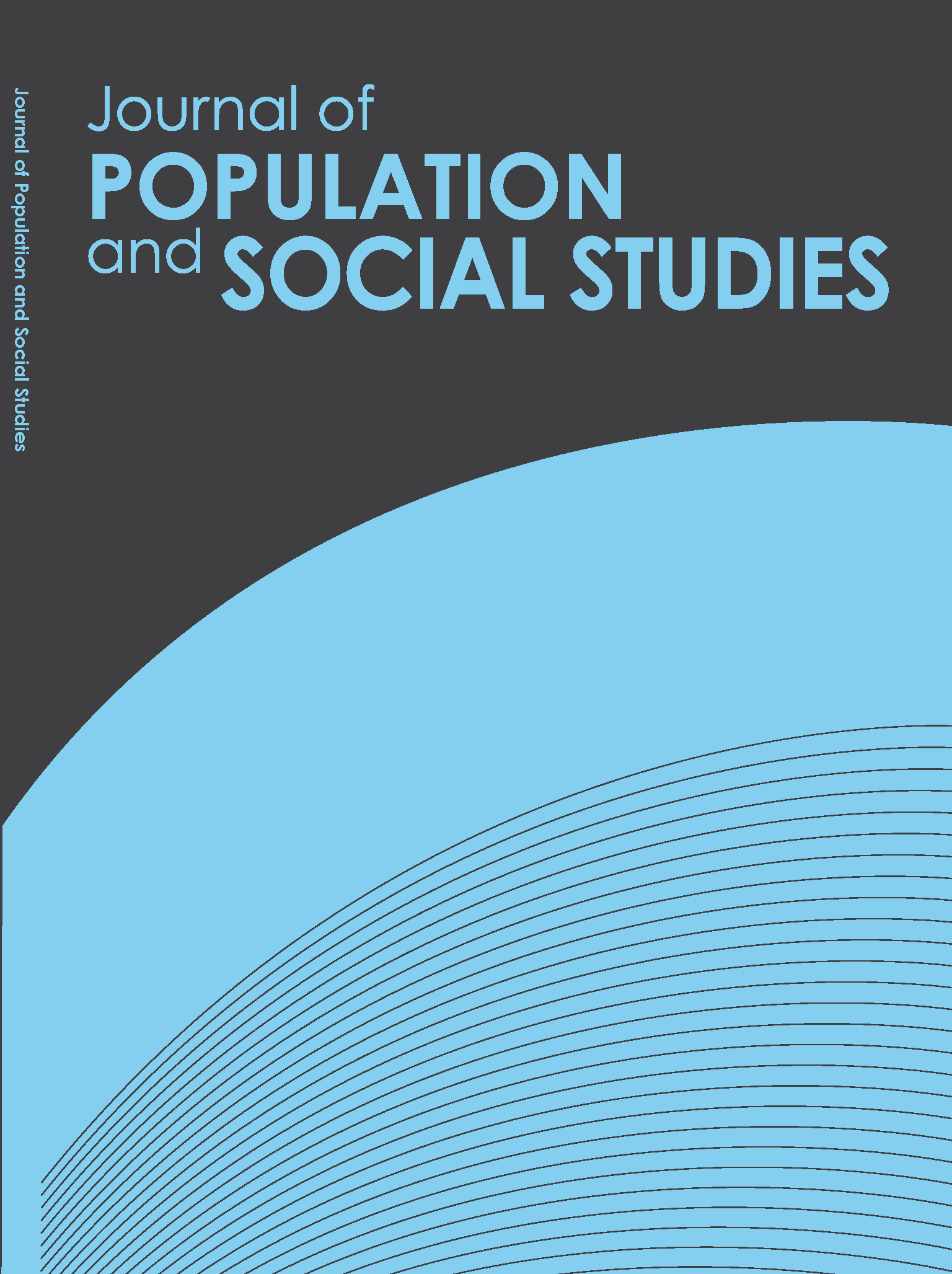Validation of the Thai Version of the Marital Commitment Scale (MCS)
Main Article Content
Abstract
The Marital Commitment Scale (MCS) developed by Johnson, Caughlin, and Huston (1999) is a widely-used instrument for assessing relationship commitment in a population. Although this scale has been used in the United States, there has been no study on its applicability in Asia. Therefore, this study developed a Thai version of the MCS (MCS-Thai) and recruited 394 adults in Thailand as sample. The validity and reliability of the MCS-Thai were examined and found to be compatible with the original version. The results of Confirmatory Factor Analysis indicated that three-factor structure (personal, moral, and structural commitment) to study relationship commitment was compatible with the conceptualization of marital commitment in the US and Thailand. However, the homogeneity of the sample (married individuals) limits the generalizability of these findings.
Article Details
References
• Adams, J., & Jones, W. (1997). The conceptualization of marital commitment: An integrative analysis. Journal of Personality and Social Psychology, 72, 1177-1196. doi: www.doi.org/10.1037/0022-3514.72.5.1177
• Cate, R.M., Levin, L.A., & Richmond, L.S. (2002). Premarital relationship stability: A review of recent research. Journal of Social and Personal Relationships, 19, 261-284. doi: 10.1177/0192513X06289215
• Glenn, N.D. (2005). With this ring… A national survey on marriage in America. National Fatherhood Initiative, 22-23.
• Impett, E.A., Beals, K.P., & Peplau, L.A. (2001). Testing the investment model of relationship commitment and stability in a longitudinal study of married couples. Current psychology, 20, 312-326. doi: 10.1007/s12144-001-1014-3
• Jaismith, S. (2010). Effects of narcissism, ludic love style, and communal activation on relationship commitment. (Unpublished master dissertation). Chulalongkorn University, Bangkok, Thailand.
• Johnson, M.P. (1982). The social and cognitive features of the dissolution of commitment to relationships. In S. Duck (Ed.), Personal relationships: Dissolving personal relationships (pp. 51-73). New York: Academic Press.
• Johnson, M.P., Caughlin, J.P., & Huston, T.L. (1999). The tripartite nature of marital commitment: Personal, moral, and structural reasons to stay married. Journal of Marriage and Family, 6, 160–177. doi: 10.2307/353891
• Kanjanaprakit, K. (2013). Effects of optimism on relationship satisfaction and commitment: The mediating role of positive illusions. (Unpublished master dissertation). Chulalongkorn University, Bangkok, Thailand.
• Kelley, H.H., & Thibaut, J.W. (1978). Interpersonal relations: A theory of interdependence. New York: Wiley.
• Le, B., & Agnew, C. (2003). Commitments and its theorized determinants: A meta-analysis of investment model. Personal Relationship, 10, 37-57. doi: 10.1111/1475-6811.00035
• Lund, M. (1985). The development of investment and commitment scales for predicting continuity of personal relationships. Journal of Social and Personal Relationships, 2, 3-23. doi: 10.1177/0265407585021001
• Ogolsky, B.G., & Bowers, J.R. (2013). A meta-analytic review of relationship maintenance and its correlates. Journal of Social and Personal Relationships, 30, 343- 367. doi: 10.1177/0265407512463338
• Owen, J., Rhoades, G.K., Stanley, S.M., & Markman, H.J. (2011). The revised commitment inventory: Psychometrics and use with unmarried couples. Journal of Family Issues, 32, 820-841.
• Ramirez, A. (2008). An examination of the tripartite approach to commitment: An actor-partner interdependence model analysis of the effect of relationship maintenance behavior. Journal of Social and Personal Relationships, 25, 943–965. doi:10.1177/0265407508100309
• Rusbult, C.E. (1980). Commitment and satisfaction in romantic associations: A test of the investment model. Journal of Experimental Social Psychology, 16, 172-186. doi: 10.1016/0022-1031(80)90007-4
• Rusbult, C.E. (1983). A longitudinal test of the investment model: The development (and deterioration) of satisfaction and commitment in heterosexual involvements. Journal of Personality and Social Psychology, 45, 101-107. doi: doi.org/10.1037/0022-3514.45.1.101
• Rusbult, C.E., Martz, J.M., & Agnew, C.R. (1998). The investment model scale: Measuring commitment level, satisfaction level, quality of alternatives, and investment size. Personal Relationships, 5, 357–391. doi: 10.1111/j.1475-6811. 1998.tb00177.x
• Stanley, S.M., & Markman, H.J. (1992). Assessing commitment in personal relationships. Journal of Marriage and the Family, 54, 595-608. doi: 10.2307/353245
• Tanchotsrinon, P. (2016). The moderating effect of marital duration and mediating effects of maintenance motivation and behavior on relationship between narcissism and marital commitment. (Unpublished doctoral dissertation). Chulalongkorn University, Bangkok, Thailand.
• Wilcox, W.B., & Nock, S.L. (2006). What’s love got to do with it? Equality, equity, commitment and women’s marital quality. Social Forces, 84, 1321-1345. doi: 10.1353/sof.2006


